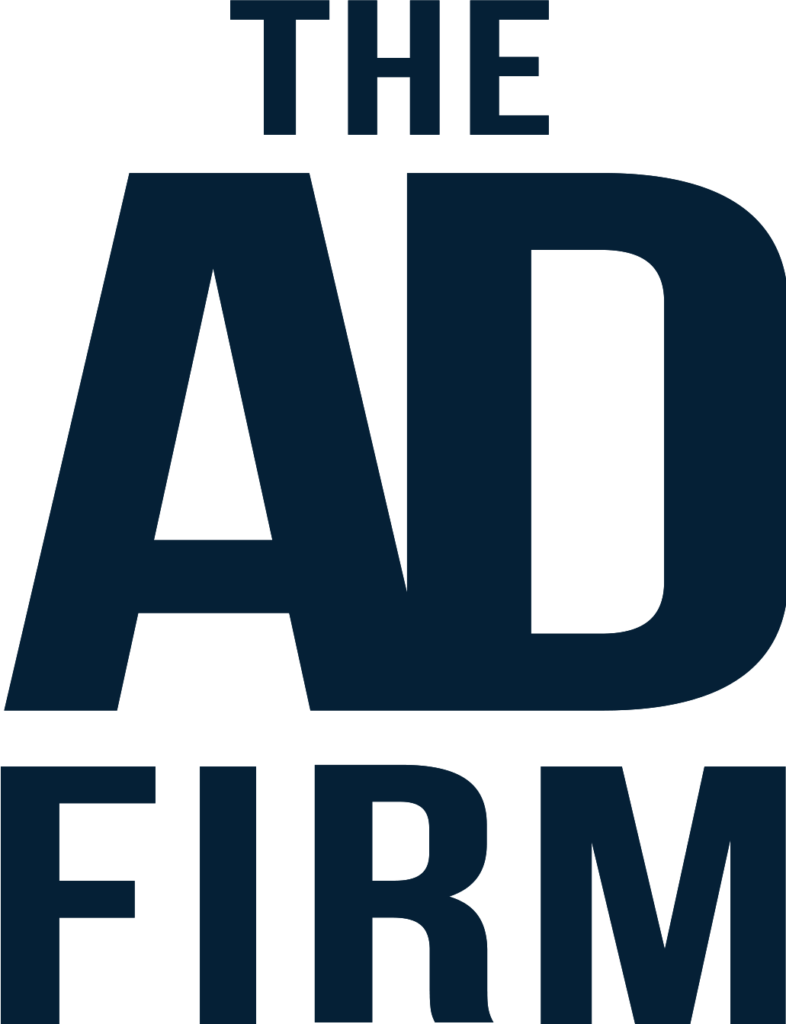Let’s be honest—it’s tough to create PPC campaigns that actually work. Many businesses struggle with wasted money on irrelevant clicks and ad budgets that disappear without boosting sales. And the main culprit? A lack of a solid strategy that can transform online visibility and deliver real results.
That’s why, in this blog, we’ll guide you through a step-by-step approach to building effective PPC campaigns that maximize ROI, making every click count. Plus, we’ll show you how aligning PPC with broader marketing strategies, like professional SEO services, can take your results to the next level.
Understanding What PPC Advertising Is
PPC, or pay-per-click advertising, is an online marketing strategy where advertisers pay a fee each time someone clicks their ad. Unlike traditional advertising, where you pay for visibility regardless of engagement, PPC charges you only when your ad successfully drives traffic to your website. These ads can appear in search engine results, on social media platforms, or across websites in display networks. Essentially, you’re buying visits from a highly targeted audience rather than waiting organically for them to find you.
In the following sections, we’ll break down the process of creating effective PPC campaigns that maximize ROI. This will include everything from defining clear goals to optimizing your ad spend, ensuring that your PPC investment generates meaningful and measurable results.
Step 1: Defining Your PPC Advertising Goals, Objectives, and Performance
Before exploring the technical aspects of PPC advertising, it’s critical to define your clear goals. Setting the right objectives ensures that your PPC campaigns are focused and aligned with your goals, whether driving traffic, generating leads, or increasing sales.
Setting SMART Goals for Your PPC Campaigns
Specific, Measurable, Achievable, Relevant, and Time-bound goals, better known as SMART goals, provide a structured approach to guiding your PPC campaigns. These goals allow you to track progress and understand whether your campaign is successful. For example, instead of aiming to “increase website traffic,” you could set a SMART goal to “increase qualified website traffic by 25% in three months.” This kind of specificity turns vague ambitions into actionable, trackable benchmarks.
To provide more context, here’s an example of how you can structure SMART goals for your PPC campaigns:
- Specific: Clearly define the outcome (e.g., increase conversions by 15%).
- Measurable: Ensure you can track the results (e.g., track conversion rates in Google Ads).
- Achievable: Set a realistic goal based on current performance and budget.
- Relevant: Align the goal with broader business objectives.
- Time-bound: Set a deadline for achieving the goal (e.g., within 90 days).
These SMART goals keep your PPC efforts targeted, as they should be, and allow you to measure success against concrete benchmarks.
Aligning PPC Objectives with Your Business Strategies
Your PPC objectives must align seamlessly with your overall business strategy. For instance, if your business strategy is focused on boosting online sales, your PPC campaigns should prioritize conversions over impressions or clicks. Every ad, keyword, and landing page should be designed with this goal. PPC campaigns with aligning business objectives create a more cohesive marketing approach, allowing you to maximize your ad spend and the overall impact on your business. Always ensure that your PPC objectives contribute to the bigger picture of your business strategy.
Measuring and Tracking PPC Campaign Performance
To maximize ROI, you need to measure and track the performance of your PPC campaigns continuously. This involves monitoring key performance indicators (KPIs) such as click-through rates (CTR), conversion rates, and cost per acquisition (CPA). Regularly reviewing these metrics lets you identify which aspects of your campaign drive results and which need improvement. Integrating tools like Google Analytics or third-party platforms helps ensure a comprehensive PPC campaign view, allowing you to make data-driven adjustments.
Step 2: Researching and Selecting Effective Keywords
Effective keyword research is the foundation of a successful PPC campaign. Selecting the right keywords ensures your ads reach a relevant audience, increasing the likelihood of clicks and conversions. This section will walk you through the essential techniques to discover and prioritize the most valuable keywords for your campaign.
Keyword Research Techniques for PPC
Keyword research for PPC is about understanding the terms your target audience is actively searching for. It’s not just about choosing popular words but identifying those that align with user intent and match your business goals. One of the essential tools here is keyword research software like Google Keyword Planner or Ahrefs, which helps you analyze search volumes, competition, and bid estimates for potential keywords.
For effective techniques for PPC keyword research, be sure to consider the following:
- Start with broad terms and then refine them using keyword modifiers (e.g., “buy,” “best,” or “near me”).
- Use competitor analysis tools to discover which keywords your competitors are bidding on.
- Focus on long-tail keywords, often less competitive and more specific, leading to higher conversion rates.
- Leverage search intent to differentiate between informational, navigational, and transactional keywords.
- Utilize negative keywords to prevent your ads from appearing in irrelevant searches.
These techniques will help you select keywords to drive traffic and align with your overall PPC objectives.
Identifying High-Intent and Relevant Keywords
High-intent keywords refer to those that signal a user is ready to act, whether purchasing, signing up, or requesting more information. Identifying these keywords is critical for optimizing your PPC campaign’s ROI. For example, a keyword like “buy office furniture” indicates a high likelihood of purchase, whereas “office furniture ideas” may reflect someone still in the research phase.
Focus on identifying and targeting high-intent keywords closely tied to your product or service. These terms often yield better results because they attract users already in the decision-making stage. Additionally, it’s essential to ensure the relevance of your keywords. Targeting irrelevant or overly broad terms can waste ad spending on clicks that don’t convert into meaningful actions.
Negative Keyword Targeting for Better ROI
Negative keywords play a vital role in refining your PPC campaigns. By excluding specific keywords from your campaigns, you prevent your ads from being shown to users searching for unrelated or irrelevant terms. This improves the quality of traffic and optimizes your ad budget by ensuring you’re not paying for clicks that don’t align with your objectives.
For example, if you sell high-end clothing, you may want to exclude terms like “cheap” or “discount” to avoid attracting bargain shoppers who are unlikely to convert. Proper negative keyword targeting contributes to better conversion rate optimization, as it helps you focus your spending on more qualified leads. Regularly reviewing and updating your negative keywords is essential to keep your campaigns efficient and cost-effective.
Step 3: Creating Compelling PPC Ad Campaigns
A well-crafted PPC ad is more than just a few lines of text—it’s your first impression of potential customers. Your ad needs to grab attention and resonate with your target audience for your campaign to stand out. This section will explore creating compelling ad copy, effectively targeting your audience, and optimizing your bidding strategies.
Crafting Attention-Grabbing Ad Copy
Ad copy is often the make-or-break factor in a PPC campaign. Since users are bombarded with ads, yours must capture their attention instantly. The goal is to communicate your value proposition quickly and clearly, ensuring that users know exactly what they’ll get by clicking your ad. Compelling ad copy should also include a call to action (CTA) that motivates users to engage.
Here are some effective tips for crafting attention-grabbing ad copy:
- Highlight a unique selling point (USP) that differentiates your product or service.
- Keep your headlines concise and focused on solving a problem or meeting a need.
- Incorporate emotional triggers, such as urgency or exclusivity, to prompt immediate action.
- Use numbers and statistics to offer tangible value (e.g., “Save 25% Today”).
- Align your CTA with your goal, whether it’s to “Buy Now,” “Sign Up,” or “Learn More.”
Effective ad copy captures attention and speaks directly to the user’s needs, driving clicks that convert into meaningful actions.
Implementing Effective Ad Targeting and Segmentation
Targeting the right audience is critical to the success of your PPC campaigns. Effective targeting ensures that your ads are shown to the most relevant users, increasing the likelihood of conversions. Audience segmentation allows you to break down your audience by demographics, location, device, interests, or behavior, ensuring each segment sees a tailored message. For instance, if you’re selling a product to different age groups, create separate ads that appeal to the specific needs of each group.
By combining demographic data and behavioral insights, you can refine your targeting to ensure your ads reach the most interested users. The more personalized your targeting, the higher the chances of generating quality leads from your PPC campaigns.
Optimizing Ad Bidding Strategies
Your bidding strategy directly impacts the cost-effectiveness and performance of your PPC campaigns. Choosing the right bidding approach depends on your goals: increasing traffic, generating leads, or maximizing ROI. Automated bidding strategies like Target CPA (Cost Per Acquisition) or Target ROAS (Return on Ad Spend) can benefit businesses seeking scalability. These strategies allow the platform to adjust bids in real-time, optimizing for conversions or revenue.
However, manual bidding can be more appropriate if you’re managing a smaller campaign or need tighter control over costs. Regularly reviewing and adjusting bids ensures you’re not overspending on low-performing keywords while maximizing visibility for high-converting ones. Incorporating reliable enterprise solutions into your bidding strategy can streamline the process, providing real-time data and insights to help you make informed decisions that improve ad performance and ROI.
Step 4: Landing Page Optimization for PPC Conversions
Your landing page is where potential customers either convert or leave, making it a critical part of your PPC strategy. If the page doesn’t deliver on your ad’s promise or lacks user experience, even the most effective PPC ad won’t achieve its full potential. This section will discuss how to design high-converting landing pages and continuously optimize them for better results.
Designing High-Converting Landing Pages
A high-converting landing page refers to one that aligns perfectly with your PPC ad and guides users toward taking the desired action, whether purchasing, signing up, or requesting a quote. Every element on the page should serve a purpose, keeping the user focused on the goal. Avoid distractions and ensure your page communicates value quickly and effectively.
Here are effective tips for designing high-converting landing pages:
- Ensure headline consistency with the ad to avoid confusion.
- Use clear, concise messaging that focuses on the benefits to the user.
- Incorporate a strong call-to-action (CTA) button that stands out.
- Leverage social proof, such as testimonials or reviews, to build trust.
- Optimize for mobile devices, ensuring a seamless experience across all platforms.
Focusing on these elements creates a streamlined path from the PPC ad to conversion, which boosts the likelihood of visitors taking action.
Improving User Experience on Landing Pages
User experience (UX) is one of the most critical factors in determining the success of a landing page. A slow-loading, hard-to-navigate page can drive potential customers away, even if the content is relevant. Ensure the page loads quickly, has easy-to-follow navigation and presents information in a clean, organized layout. Keep forms short and only ask for essential information to reduce friction.
Improving UX also means reducing distractions. Remove unnecessary links or elements that might distract users from the desired action. An intuitive, user-friendly design ensures visitors can complete the conversion process without frustration or confusion.
Testing and Iterating Landing Page Elements
Even the most well-designed landing page can benefit from ongoing testing and optimization. A/B testing allows you to compare different page versions to see which performs better. Test elements such as headlines, CTA buttons, images, and color schemes to determine what resonates best with your audience. Data-driven testing is critical to identifying and making incremental improvements that drive higher conversion rates.
Additionally, consider how effective web hosting can impact the overall performance of your landing page. Reliable and fast hosting ensures that your page loads quickly, preventing users from bouncing due to slow load times. It is advisable to continuously test and optimize your landing pages for maximum conversions over time.
Step 5: PPC Budget Management and Optimization
Managing your PPC budget effectively is essential to achieving the best results while controlling costs. A well-planned budget ensures you’re spending efficiently across campaigns and continuously optimizing your ad spending to maximize ROI.
Determining an Appropriate PPC Budget
The first step in budget management is determining how much you’re willing to spend. Your PPC budget should align with your overall business goals and the expected return on investment. Start by calculating how much you can afford for each conversion, considering your profit margins, customer lifetime value, and sales cycle. If running a new campaign, begin with a smaller budget to test performance before scaling up. By understanding your financial limits and setting realistic expectations, you can avoid overspending while driving quality traffic.
Allocating Budget Across Campaigns and Ad Groups
Not all PPC campaigns or ad groups perform equally, so it’s essential to allocate your budget strategically. Start by prioritizing the campaigns that have historically shown the best performance in terms of conversions or cost-per-click (CPC). Test different ad groups and keywords with a small portion of your budget for new campaigns to gauge their effectiveness. As you gather data, shift more of your budget towards high-performing campaigns while cutting back on underperforming ones. This ensures that your ad spend is focused on generating the highest return rather than being spread too thinly across ineffective areas.
Continuously Optimizing PPC Spending for ROI
To maximize your ROI, continuous optimization of your PPC spending is crucial. Regularly reviewing campaign performance allows you to adjust bids, pause ineffective ads, and reallocate the budget where it will have the most impact. Consider using automated bidding strategies or innovative bidding tools to optimize based on real-time data. Additionally, combining local SEO integration with PPC can improve ads targeting users in specific locations, especially for businesses with a physical presence. The key to long-term PPC success is staying proactive and constantly refining your strategy based on performance metrics and evolving trends in the market.









